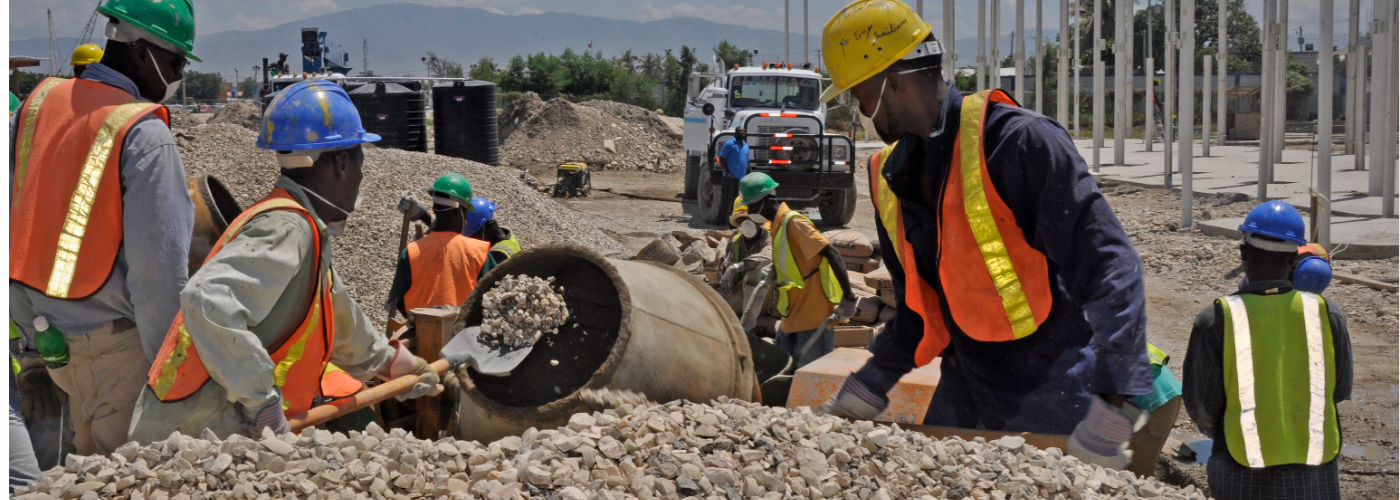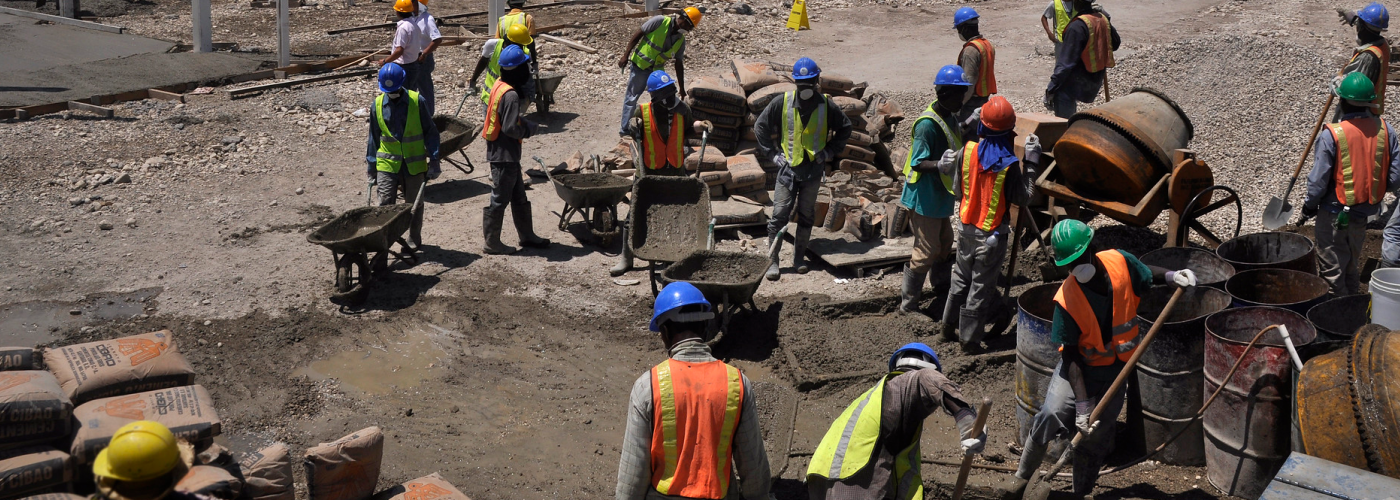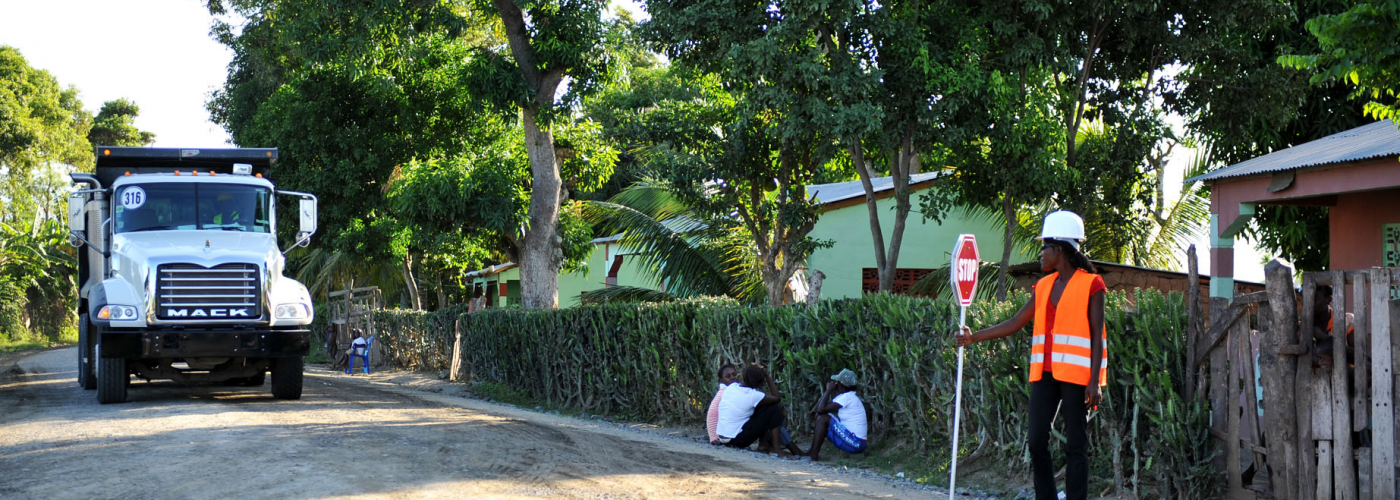Returning to the post-pandemic workplace: The foundational role of modern construction standards to economic recovery and resilient economic growth
Image

ABOUT THE AUTHOR: M. Daniel Vazquez is a Senior Standards Specialist at the Center for Economics and Market Development in the Bureau for Development, Democracy and Innovation at USAID.
The roll-out of COVID-19 vaccination plans around the world is giving governments, companies, and people hope, space to plan for a safe return to office spaces fled a year ago, and ways to re-energize economies. Governments are designing national recovery plans with building and infrastructure development as key cornerstones. Yet, their building codes have not been updated to reflect the lessons learned during the pandemic, let alone the parameters needed to assure that new structures are resilient to other future challenges, like those of climate change.
The Standards Alliance, a Public-Private Partnership between USAID and the American National Standards Institute (ANSI), is helping USAID partner countries build their capacities on technical standards, including those related to building and construction. Currently, it is working with Tanzania and Mexico, among others, to advance the adoption and implementation of standards on issues such as energy efficiency and concrete. Technical standards and building codes have the distinct benefit of providing clear and implementable guidance to governments, builders, and societies resulting in quantifiable development outcomes. M. Daniel Vazquez, Sr. Standards Specialist of USAID’s Center for Economics and Market Development, spoke to Judy Zakreski, Vice President of Global Services of the International Code Council (ICC) to explore these questions. ICC, a USAID Standards Alliance partner, develops a family of international construction-related codes, including the International Building Code. Since the beginning of the COVID-19 pandemic, ICC has been at the forefront of some of these conversations.
Daniel Vazquez (DV): The economy is warming up, people are dusting off their work clothes and preparing for a return to the office. How is the construction industry thinking about the future of the work environment post-pandemic, and how can building standards support companies’ goals to bring back the workforce?
Judy Zakreski (JZ): A lot of the thought leadership about safe working environments post-pandemic is actually coming from designers and standards developers. At the beginning of the pandemic, the International Code Council set up a Coronavirus Resource Center to provide our members – who are primarily building officials, designers, and manufacturers – with important information that could be used to shift to remote work (such as online access to codes, remote inspection tools, and training). Eventually, information expanded to include safety practices for reopening buildings, guidelines for converting outdoor spaces for temporary seating, and globally-developed guidelines about converting structures for use as temporary healthcare facilities. More recently, ICC has actually established a pandemic task force, together with the National Environmental Health Association (NEHA), to look ahead to the next threat and apply the lessons that we have learned having lived through COVID-19. The task force, which includes experts from Australia, New Zealand, the United Arab Emirates, the United Kingdom, in addition to a wide representation of experts from the United States, is looking at good global practices with respect to the design and layout of buildings with the intent to develop guidelines and recommendations that will be globally applicable.
With respect to the role of building standards in supporting companies to bring back the workforce, there is a lot of discussion as you might imagine around indoor air quality and proper ventilation. Many standards already existed in this area, and are incorporated for instance in the International Mechanical Code, which references over 250 WTO-compliant standards including ASHRAE’s 62.1 standard for ventilation for acceptable indoor air quality, NFPA’s 91 standard for exhaust systems, and UL’s standard 586 for high-efficiency particulate air filter units. The guidelines and recommendations that will be issued by the pandemic task force will have the potential to drive improvements in future codes and standards. ICC’s white paper on Considerations for Reopening Following the COVID-19 Pandemic provides a checklist for building owners and building officials to follow when assessing a building’s readiness to reopen after perhaps being dormant or unoccupied for many months.
DV: Countries around the world are turning to massive infrastructure packages to accelerate and revitalize their economies. In this context and considering buildings as part of infrastructure packages, can construction standards play a role in the global economic takeoff or deter it?
Image

Photo by Ben Edwards/USAID
JZ: Construction standards are essential as countries invest in infrastructure, and they play an important role in ensuring that what is built today will be resilient to future hazards. Building resiliency is increasingly recognized as a critical topic among building code development and research organizations around the world, and is in fact what prompted the Global Resiliency Dialogue – a partnership between the United States, Canada, Australia and New Zealand to advance discussions of integrating future-looking climate science into building codes, which have traditionally relied on historical weather data to define climate zones, flood maps, high wind risks, wildfire risk, etc. Not using advanced construction standards – and particularly those that incorporate resilience measures – can result in huge reinvestment needs in the future. A study by the National Institute of Building Sciences (NIBS) in the United States shows that regular adoption of the International Building Code (IBC) and the International Residential Code (IRC) provides an $11 benefit for every $1 invested. A companion study undertaken by the Federal Emergency Management Agency (FEMA) found that between 2000 and 2016 the IBC and IRC provided $27 billion in cumulative benefits against flood, hurricane wind, and earthquakes, and that by 2040 the benefit could be increased to $171 billion. Drawing from these findings, it can be argued that if all new construction (including everything that is being funded by infrastructure packages) were built to modern standards, countries could save billions of dollars in the medium and long run. Seeing data like this should make people question why we *wouldn’t* incorporate robust, modern construction standards!
Still, we sometimes see pushback about the costs of more resilient or energy efficient construction. However, contemporary research continues to find that modern model building codes have no appreciable implications for construction affordability—in fact, no peer reviewed research has found otherwise. Just as an example, a detailed benefit-cost analysis of seismic code adoption for Memphis, Tennessee found that adopting up-to-date codes, for the apartment building studied, would add less than 1 percent to the construction cost (and less to the purchase price, since construction cost typically amounts to between one-third and two-thirds of purchase price), while reducing annualized loss—in terms of repair cost, collapse probability, and fatalities—by approximately 50 percent.
Keeping utility bills low also has obvious positive and direct economic benefits on households. The Department of Energy estimates that robust energy codes and standards can save owners and occupants in the United States $126 billion in avoided energy bills by 2040, with emission reductions equivalent to the annual emissions from 89 million homes. Those same codes and standards help maintain internal temperatures, permitting building occupants to more safely shelter in place for periods without power during extreme weather. So, there is a strong argument of all governments that seek to protect taxpayer investments to assure that new construction is consistent with modern standards that help protect them from hazards and bake in sustainability measures like lower energy use.
DV: Regulations are difficult to change, but in the coming months, we may see an influx of better and improved techniques to manage COVID-19 and innovations to beat the pandemic. Is there a path that USAID partner countries can follow for implementing flexible and adaptable construction standards that do not prevent innovations in the health space from being incorporated into construction standards?
JZ: Absolutely. This is the appeal of performance-based building codes. A handful of countries around the world rely on exclusively performance-based or objective-based building codes that offer designers maximum flexibility in innovation as long as the designs can deliver the stated performance objectives. Of course, these codes are more difficult to enforce because the use of innovative materials and methods is not always widely proven to be safe or effective. The International Codes are largely prescriptive, which means that they reference over 1500 standards that provide compliance pathways that are easier to test and provide evidence that a product or design or building system is compliant with the code. However, the International Codes do offer a performance-based option for innovative materials and methods which support innovation. In many countries, including the U.S., product certification bodies like the ICC Evaluation Service, with specialized knowledge in the building code and referenced standards, can help manufacturers design criteria to which their products can be tested to demonstrate compliance to the code even without a specific standard as the compliance pathway. This type of solution for innovative methods and materials is becoming more widely accepted around the world, but as with any type of conformity assessment, it is really critical for regulators to only rely on accredited third-party testing, inspection, and certification bodies that have proven knowledge and credibility.
Recognizing an increased interest in performance-based design, ICC is also undertaking a comprehensive review of our ICC Performance Code (ICCPC) to lay the groundwork for it to be updated based on the advancements in performance based design and to incorporate resilience, energy efficiency, plumbing, mechanical, and other elements that were not originally addressed in the ICCPC. We also envision more global adoption of an updated performance code, as it can be used as the scaffolding that lower and middle income countries without building regulations can use to define objectives and reference local standards that pertain to locally-available building materials and commonly utilized construction methods as compliance pathways.
Image

Photo by Kendra Helmer/USAID
DV: Dealing with COVID-19 is still very much present in everyone’s mind, but governments are also realizing that dealing with other global problems that affect buildings and infrastructure, like climate change, can’t continue to be on the backburner. Taking the examples of climate change, which is a complex multidimensional problem that has environmental, financial, and asset preservation implications, are modern regulatory frameworks up to the task of meeting climate change challenges?
JZ: The International Code Council is working hard to ensure that this is the case, at least for buildings, which are responsible for 35 percent of greenhouse gas emissions globally. In fact, buildings and construction can play a huge role in achieving the Nationally Determined Contribution to carbon reduction that the Biden Administration announced in April, and to which all countries will be revisiting during the COP26 UN Climate Conference in Glasgow this November. Similarly, other building codes around the world can offer solutions that enable other countries to meet their reduction targets.
A major initiative to help move in this direction is our new energy framework, which transition the International Energy Conservation Code (IECC) into a standards development process that enables greater input and dialogue from a wider group of stakeholders as well as a continuous maintenance cycle to facilitate the ability of the code to keep pace with changing technologies that foster energy efficiency and reduce greenhouse gas emissions. The 2021 IECC is already 40 percent more efficient than the 2006 version, and only 10 percent away from the net zero appendix for residential buildings, and we’ve committed to ensuring that these types of energy efficiency gains continue in each subsequent edition of the code.
But, climate change demands that we look at problems in multiple areas as a unit like those related to water efficiency, site/material sustainability, environmental quality, and neighborhood planning, in addition to energy efficiency. At ICC we do that through our energy framework that integrates with our suite of codes, including the IECC and the International Green Construction Code (IgCC). We also recognize that making strong codes and standards available is not enough. They need to be accompanied by complementary policies that build off the existing regulatory frameworks, including electric vehicle charging, grid interactivity, embodied carbon, and building performance standards for existing buildings. Governments also need to do their part enforcing the related standards and codes.
Solutions to some of these problems should be discussed in platforms with global reach like the Global Alliance for Buildings and Communities, in which we participate. In the upcoming COP26 we will present some of our solutions that other jurisdictions around the world can use to improve the carbon footprints of their buildings. In fact, some of the ICC tools have already been successfully adapted by regions, like the CARICOM Regional Energy Efficiency Building Code (CREEBC) that was adapted from the 2018 version of the International Energy Efficiency Building Code. The CREEBC is applicable as a model code beyond the Caribbean, including in about two dozen lower and middle income countries that are in similar climate zones and has ready-to-use customized online training and certification programs to help with its uptake.
Overall, I think that the biggest takeaway is that evolving to respond to external challenges is sometimes painful and sometimes requires additional up-front investments, but research shows that it is worth doing to protect people and investments.
DV: Thank you, Judy, this was a very enlightening conversation. Collaborating with our partner, ANSI, USAID is helping our partner countries implement modern standards, increase regulatory transparency, and promote robust collaboration with the private sector to achieve meaningful development outcomes.

